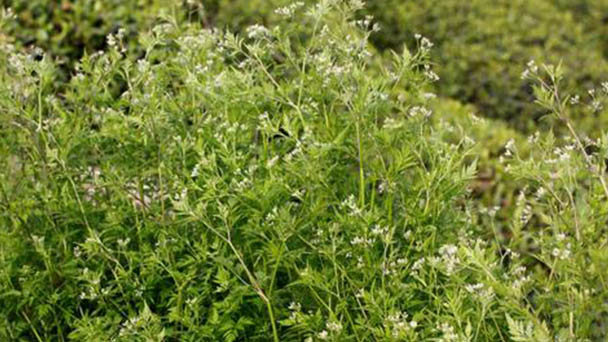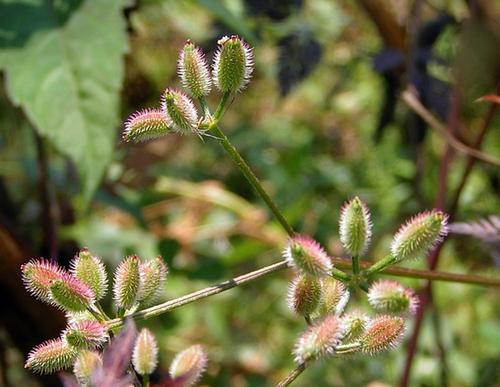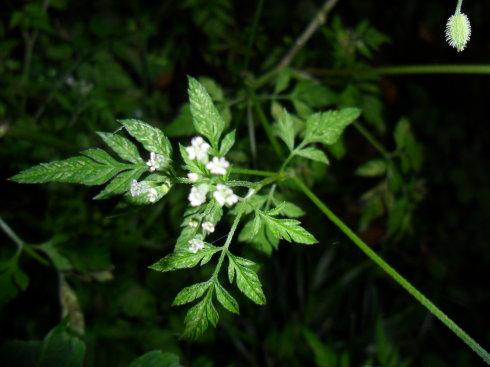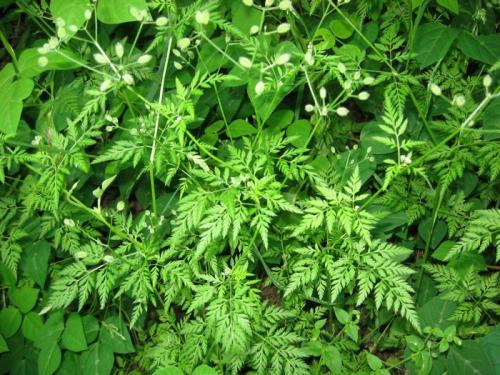Torilis scabra profile
Written by Maggie
Mar 24 2021

The plant Torilis Slabra is an annual or perennial herb of the genus Torilis Slabra in the Umbelliferous family. Torilis Slabra is native to an area between 250 and 2400 m above sea level and is found both domestically and internationally. Torilis scabra is the fruit or whole grass of the Umbelliferaceae plants Torilis scabra and Torilis scabra.
Torilis Scabra harvested in late summer and early autumn, dried or used fresh, from "Fujian Pharmaceutical Journal". It has the effect of activating blood and detumescence, astringent and insecticide. Torilis Slabra can be used for chronic diarrhea, ascariasis; For external treatment of carbuncle ulcer for a long time not closed, vaginal trichomonas and other diseases.
Torilis Scabra picture

Morphological characteristics of Torilis Scabra
Torilis scabra is an annual or perennial herb, 10 -- 70cm tall. The whole plant has a short bristle. The stem is solitary, branched, with fine straight lines and bristles. Leaves are ovate, one to two pinnately divided, leaflets lanceolate ovate, pinnately deeply lobed, final lobes lanceolate to oblong, 2-10mm long, 2-5mm wide, margin with lacerate coarsely toothed to incised or divided. Inflorescences are terminal and axillary complex umbels, peduncles 2 -- 8cm long; Involucral bracts are usually absent, rarely 1, subulate or linear; Torilis Slabra has 5-8 involucral bracts, subulate or linear; Inflorescences are umbels with flowers 4-12; Calyx teeth are fine, triangular-lanceolate, petals white, oblong-ovate, apex inflexed; Styloid is paniculate, style reflexively curved. Fruit is oblong, 4 -- 7mm long, 2 -- 3mm wide, with inward-curved or hooked prickles, rough, with tubing 1 below each groove.
Torilis Scabra has slender, conical roots. The stem is erect, cylindrical, distally branched, surface finely fluted, voluminous short bristles.Leaves long pedunculate, complex umbels long pedunculate, 2 -- 4 cm in diameter, all voluminous short setae; Involucral bracts usually 5, up to 8, linear, pedicels 4 -- 6, unequal; Umbels ca. is 5 mm in diameter, with 4- to 12-flowered; Torilis Slabra has 5-8 involucral bracts, linearly tapered, 2-3 mm long; Calyx teeth are triangular-lanceolate; Petals are white; Styloid is conical, style decumbent in fruit. Diploid fruit is ovate, 2-4 mm long, densely hooked; Each of the grooves were provided with 1 oil pipe, followed by 2 oil pipes. Seed is ventral concave.
The taproots of Torilis Scabra are slender, conical, brownish yellow, with numerous branched-roots. The stem is terete, longitudinally striated, spiny. Leaves are alternate, petiole 2 ~ 7 cm long, with membranous leaf sheaths at the base, leaf contour is ovate or lanceolate, one to two pinnately divided; Pinnate outline is ovate-lanceolate, 2 -- 6 cm long, 1 -- 2.5 cm wide, pinnately lobed to entire, sparsely appressed bristles on both surfaces; Pinnules are lanceolate to oblong, margin lacerate coarsely toothed or divided. Flowers open in spring and summer, very small, white, reddish, or purple, arranged in terminal and axillary complex umbels, pedicels 3 -- 25 cm long, inverted bristles; Bracts are usually linear, rarely leaflike; Stinger 4 ~ 12, 1 ~ 3 cm long, spiny, with 4 ~ 12 flowers; Calyx margin with 5 triangular teeth; Petals are obovate, 0.8 -- 1.2 mm long, apical inflexed, outer with appressed bristles below middle; Filaments ca. are 1 mm. Meriferous fruit is oblong-ovate, 1.5 -- 4 mm long and 1.5 -- 2 mm wide, usually with 3 -- 6 inward-curved hook prickles, the base of prickles broadly spreading, scabrous; The ventral surface of the endosperm is concave, with 1 tubing in each groove.
The ecological habits of Torilis Scabra
Ecological environment: on the hillside, under the forest, the river, and grasslands.
Torilis Slabra was born in 150-3060m above sea level of the miscellaneous forest, forest edge, roadside, ditch and streamside in the grass.

The distribution of Torilis Scabra
Distribution: All over the country except Heilongjiang, Inner Mongolia, Xinjiang etc. It is also found in temperate regions of Europe, northern Africa and Asia.
Several times throughout the country.
Taxonomy of Torilis Scabra
Torilis Slabra has about 20 species, distributed in Europe, Asia, North and South America, tropical Africa and New Zealand.Four species in China and one species in Beijing.
The role of Torilis Scabra
Torilis Scabra seedlings for spring mountain vegetables, fruit medicinal, called the southern stork louse, has the function of promoting blood, detumescence, convergence, insecticidal, can treat chronic diarrhea, drive roundworm. Fruits can also be extracted from volatile oil.

Latest Updated
- Benefits of Bugleweed - 7 Science-backed Health Benefits
- Bugleweed Dangers & Side Effects - Is It Poisonous?
- How to Plant Evergreen Trees - What You Should Know
- When to Plant Evergreens - Grow Guide for Evergreen Trees
- 12 Wonderful Evergreen Shrubs for Your Garden
- 12 Popular Evergreen Plants with Pictures for Beginners
- When And How To Prune A Lilac Bush Like a Pro
- How to Grow & Care for Lilac Vine (Hardenbergia Violacea)
- Japanese Lilac Tree (Syringa Reticulata) Care & Propagation Guide
- Shumard Oak Pros and Cons - What to Know
Popular Articles
- Winter maintenance of Antirrhinum Majus
- How to Grow Terminalia Mantaly Tree
- How to Grow and Care for Crossostephium Chinense
- How to grow Antirrhinum Majus in spring
- Peristeria Elata (Dove Orchid) Profile: Info & Care Guide
- Underwatered Snake Plant (Sansevieria Trifasciata) - Signs And How To Fix
- How to Care for Brazilian Jasmine Plant (Mandevilla Sanderi)
- How to Grow & Care for Graptopetalum Purple Delight in Summer
- Rosa Chinensis (China Rose): Plant Growing & Care Tips
- How to Care for Baby Sun Rose (Aptenia Cordifolia)